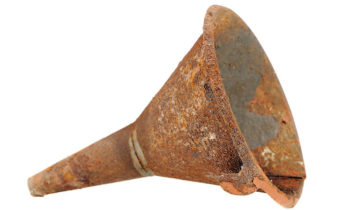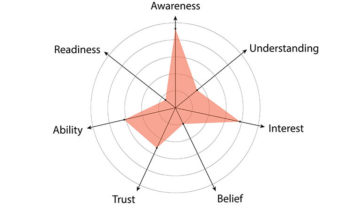The Good Stuff
As You Sow, So Shall You Reap
Levison Wood knows something about generosity and so does Kris Klein.
As documented in his Walking the Himalayas series, Wood shared a meal with Kirgiz shepherds in the Wakhan Corridor in the remote northeastern corner of Afghanistan. In the documentary, the chief welcomes Wood over the open fire and offers him the eyeball of a sheep and then a bowlful of brains. Wood explains these are the choicest pieces. Kirgiz tradition is that the good stuff is always shared.
While the prospect of chewing on an eyeball might seem foreign to you or me, the idea of sharing the good stuff with others is familiar. The world over, people in a community are taught to share with others, particularly strangers, with no expectation of return. Call it karma or paying it forward, human beings have a sense that what goes around comes around. As the early Christian writer, Paul, wrote to a community in Galatia, “As you sow, so shall you reap.”
The Secret to Effective Content Marketing
Kris is the CEO of the well-regarded marketing and sales strategy consultancy Lenati. He believes in “top funnel demand.” From where he sits, he sees a lot of small professional services businesses initially rely solely on their network of relationships to scale. Over time, however, those relationships cannot keep the firm on a high-growth path.
I asked Kris to hazard a guess about the relative proportion of demand-driven business to non-demand driven business that exists in his own firm. He reported that it used to be that 100% of new business came from the network, but now the firm is generating about 30% of its business using automated outreach and content marketing, so-called demand marketing.
Here is how it works: You give something of value to the audience you hope to court on your website. This can be anything from a consumer’s guide to an instructional video or a whitepaper. The important thing is that the target audience finds it when they are looking to learn more about the subject on which you are an expert and then is attracted to the content. From there, marketing automation takes over.
I asked Kris what made him so successful
His secret?
“You have to share your good stuff.”
Give Away Your Best Work
Seth Godin has written, “In the digital world, the more free samples you give away, the better you do. The miserly mindset that afflicts the merchant watching inventory walk out the door at the market is counterproductive in the digital world.” But what Kris is talking about is somewhat different from Godin’s philosophy of free samples. Kris is talking about giving away your best work, and that is harder.
Like the Kirgiz herdsman, don’t sandbag your generosity. If you believe that welcoming a guest is a duty and a high honor, then serve up the eyeballs and don’t keep them for yourself to munch on after the party is over. Serve them without a feeling of loss but instead with a feeling of creating something greater: a new friend or ally.
The same goes for content marketing. If you hold back your “good stuff,” your efforts will be less effective. Your good stuff is, by definition, the most interesting stuff. If you hold back and offer up only your not-so-good-stuff, your offering will be less compelling.
Giving away your best work won’t be easy. “This was hard to create. I want to be paid for it. What if I do attract a new client, what will I have to show them that they haven’t already seen? Then there are my competitors. Won’t they just rip off my stuff?”
All good
Salma Jafri writes,
Give away the why, what and who. Give away the inspirational content. Give away the content that shows people what’s possible. Give away the results. Give away the stories. Give away your opinion. Give away your best thoughts on the topic.
Instead,
Charge for the how, Charge for showing people how to get from A to B. Charge for the processes that you’ve made. Charge for showing the systems you’ve set up that they can replicate. Charge for the templates. Charge for, “I’ll hold your hand all the way.” Charge for customization. Charge for training. Charge for empowering your audience.
Indeed, Salma gave away that insight for free and look what happened. I received that gift and found it valuable and now am passing it on to you. It is as if there is a direct relationship between the value you offer and the speed at which word spreads that you are a source of expertise and insight.
So, don’t hog the eyeballs, share them with every honored guest who shares a meal in your yurt. “Share the good stuff,” as Kris says.




